Recently the Centers for Medicare & Medicaid Services (CMS) released tens of millions of medical claims including how much Medicare paid individual doctors and the specific services for which they were paid. The data include everything covered by Medicare Part B (outpatient services such as tests and office visits), creating a valuable resource for anyone interested in gathering information on the health care system. Many in the research world and public domain alike have taken the opportunity to explore this “data dump” and expose significant trends.
The Merkin Initiative on Payment Reform and Clinical Leadership recently hosted “Hacking America’s Health” a series of presentations in partnership with 1776 DC’s Challenge Festival, to discuss what this information can teach us about the U.S. health care system and what can be done with it. The event featured six presentations from experts on health and technology policy, who spoke from a variety of perspectives, both inside and outside government on the importance of data in healthcare.
Farzad Mostashari, visiting fellow at Brookings and former National Coordinator for Health Information Technology at the U.S. Department of Health and Human Services, gave the first presentation entitled “Hashtag: ThingsYouCanDoWithCMSData.” Dr. Mostashari explained that initial analysis of the data focus on simple addition and sorting (for example, how much did Medicare pay a particular doctor?). However, richer strategies include analysis of variation (did Medicare pay the same amount for the same service in the same location?) and analysis of outliers (as seen in figure 1, did some physicians vary significantly from the rest of their peers in number of services bill for?). For patients this is critical to understanding level of provider experience and determining out-of-pocket costs that could impact their health care outcomes.
Figure 1. The green dot represents a clear outlier, a physician who performed 1,697 interactive psychiatric diagnostic interviews on 28 patients.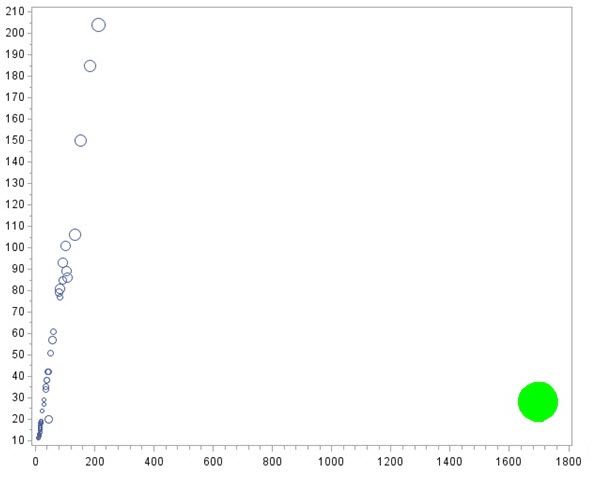
Next, Kavita Patel, Fellow and Managing Director at Brookings, spoke on “How Data Can Better Inform the Four P’s: Patients, Providers, Payers and Policymakers”. Dr. Patel discussed how this data should be utilized by all stakeholders in the healthcare system to transform the traditional doctor’s visit and provide more effective care. Data availability can reveal useful patterns to patients, physicians, payers, and policy makers to help them make better health care decisions. For example, the heat map in figure 2 shows variations in Medicare spending across the country. This information tells payers and policymakers which areas of the country have high levels of variation, and thus opportunities for improvement. Payers can promote higher quality care by knowing which providers are delivering the best care for lowest cost and policymakers have an essential role to play by identifying anomalies and ensuring transparency remains.
Figure 2. This map is an example of how the CMS data could be used by payers and policy makers to identify variation in spending.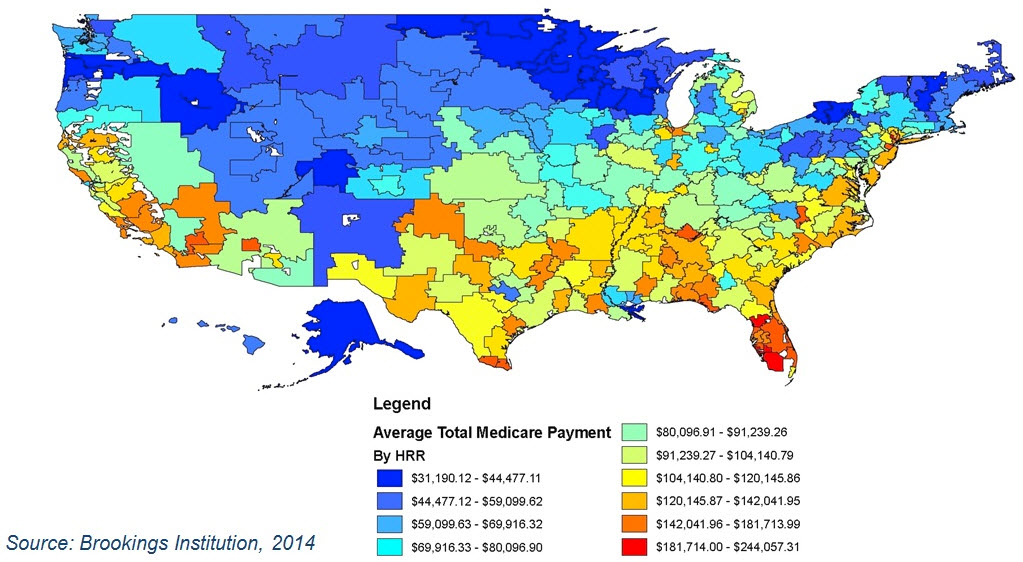
Jonathan Blum, outgoing deputy administrator and director for CMS, gave the third presentation entitled “An Evidence Case for Data Transparency.” He presented previous examples of data releases that have provided important feedback to providers allowing them to improve their practice. For example, in 2011 CMS put together a bundled payment system that required dialysis providers to take on greater responsibility for providing lower cost, higher quality care. CMS tracked certain indicators of quality, such as blood transfusions, and called specific facilities to make them aware when they were providing unnecessary procedures. This information allowed physicians to change their practice, providing better health care at lower cost.
Next, Darshak Sanghavi, Fellow and Managing Director at Brookings, gave his presentation, entitled “How Patients Can Use Data for Better Health, and Maybe Save Their Own Lives.” His remarks focused on the fact that data transparency itself is insufficient for even the most sophisticated patients to make good decisions. Dr. Sanghavi used the example of President Clinton’s bypass surgery five years ago. Despite the fact that data was available on the success of procedures performed at a range of New York City hospitals, the former President underwent surgery at the lowest performing hospital in the city with death rates of twice the expected rate. It is important when releasing data that it be easily understandable and actionable for patients, such as a consumer reports format which Dr. Sanghavi had helped develop in Massachusetts (figure 3).
Figure 3. An example of how health care data can be presented in a clear and easy to understand format for consumers.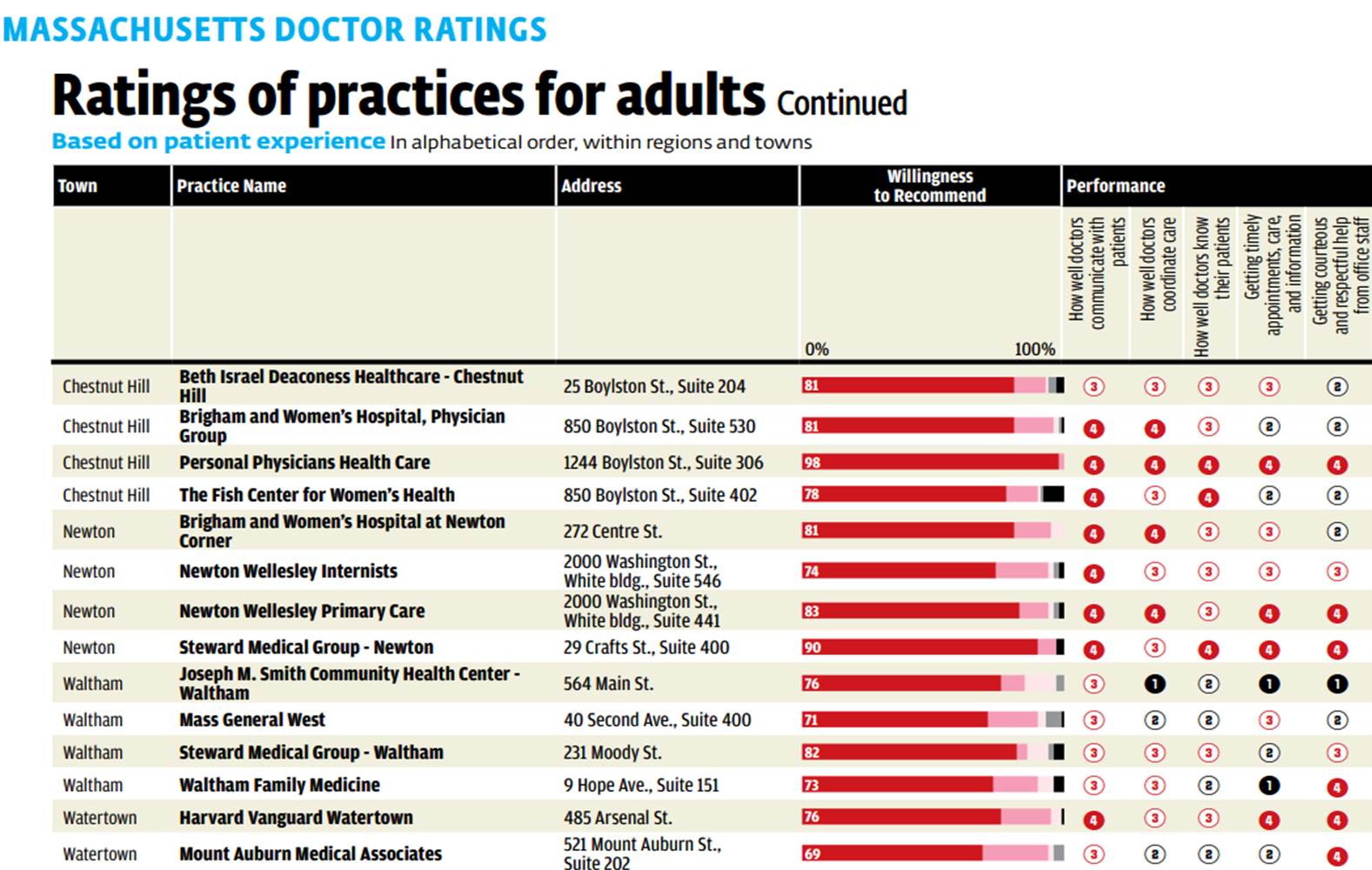
Bryan Sivak, CTO & Entrepreneur-in-Residence at the U.S. Department of Health and Human Services, discussed many of the current efforts to make data more actionable in his presentation entitled “The Innovation, Data & Health Ecosystem.” He explained how HHS has partnered and encouraged innovation from private and public groups using data to assist patients through the HHS Idea Lab. He described one example of a new company called Aidin that aims to provide patients with better information about post-acute care facilities. Most families choose a facility based on how close it is to their home without realizing that they may vary significantly in the quality of care provided. Aidan consolidates useful information about facilities into one easy to understand application to allow families to make decisions based on important health care data as opposed to convenience.
Lastly, Claudia Williams, Director of the State Health Information Exchange Program, gave her presentation entitled “Making ‘Open’ the New Default for Government Information.” She discussed the various efforts of the government through Project Open Data to catalyze action, share examples and best practices, and seek feedback through hackathons, workshops and summits such as the recent Health Datapalooza. Through an executive order, President Obama has made it a priority to create a new dialogue between the government and its citizens regarding the government’s actions.
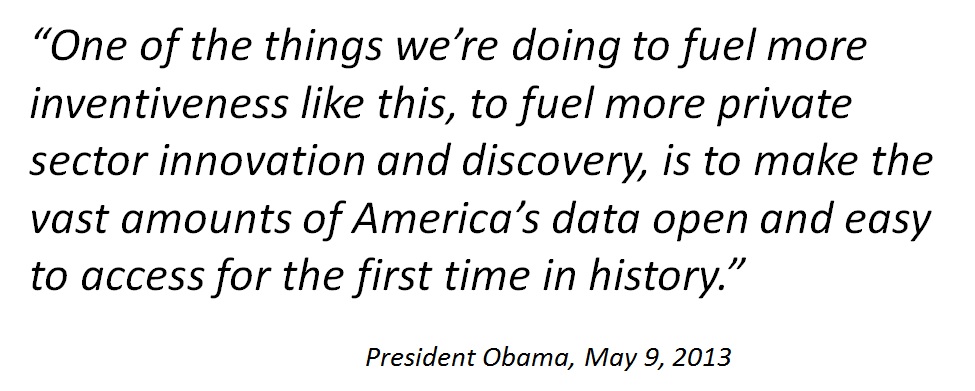
The day’s presentations demonstrated the importance of data transparency in encouraging innovation and promoting high quality health care, while also recognizing the barriers to presenting data to the public. When done correctly, releasing data to the public can reveal opportunities to reduce inefficiencies and disrupt the $2.8 trillion dollar health care system. These opportunities are ripe for the entrepreneurial-minded to invent products to allow patients, physicians, payers, and policymakers to change their behavior, resulting in lower cost, higher quality care.
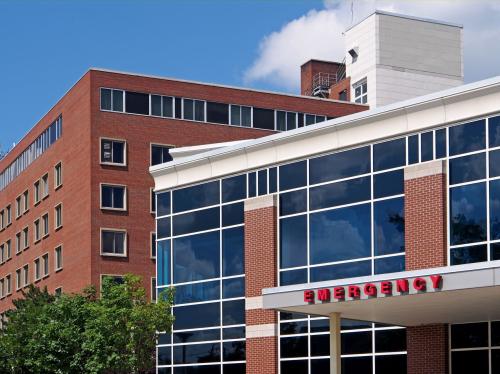
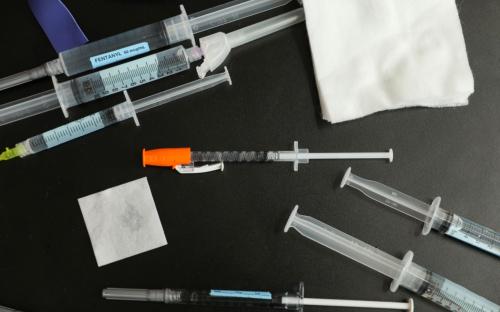

Commentary
Hacking Health: Using Data to Improve America’s Health Care System
June 4, 2014